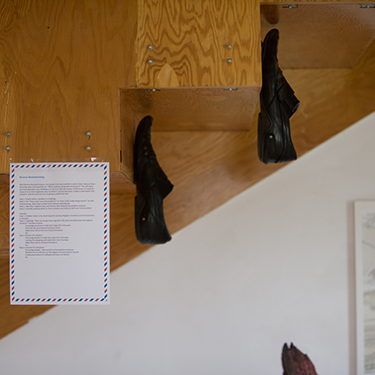
TARGET GROUP
Is participant experience relevant?It's okay if participants haven't seen the inside of a classroom in years. Physical trust needed
Mental trust needed
MATERIALSMaterial Descriptionflipchart & markers
REQUIREMENTSDuration30 minutes – 2 hours Experience level of the facilitatortaken part OR some facilitation experience Number of facilitators1 or more. If you work with subgroups, a facilitator for each 2 subgroups is helpful to enhance quality, especially with an unexperienced group or strong hierarchies. CHARACTER OF THE METHODLevel of activationactivatingHidden curriculumIdeas you first thought totally absurd can lead to amazing results - this trains us not to judge ideas instantly and helps participants to value value detours and be more tolerant with opposing thoughts. Woo-Woo Level – How touchy-feely is this method?From 1.Rationalist-Materialist “No feelings here, folks.” to 5.Esoteric-Shamanic Bleeding Heart: Innovation Phases:• 2 Creating an Innovation-Friendly Culture Method Category: |
SHORT DESCRIPTIONA classic, easy and effective creativity technique that helps you think outside the box. ALTERNATIVE NAME OF THE METHODReversal, flip-flop, paradoxical intervention, assumption reversal BACKGROUNDBACKGROUND AND PURPOSEThis thinking process generates ideas about a problem or views a problem in a novel way by reversing assumptions. This tool requires an issue, idea or goal to be reversed or stated in a negative form in order to gain more ideas of what could be causing a given problem. Assumptions structure social reality. When changing assumptions, reality changes. Different assumptions produce different consequences. The procedure aims to: ORIGINAL SOURCEWe cannot trace this back to the original source, it seems to be in the common good. If you are the originator of this method or know him/her, please let us know. STEP-BY-STEP GUIDEPREPARATION (excluding materials)Provide Flipchart paper and markers and set up the room in a communicative setting. If you work with a large group prepare workspaces where small groups of 3-5, max. 7, can work together either around tables or in a small semicircle around a flipchart. 1 Clarify the challengeState the challenge and write it on the flipchart. Make sure the problem is clearly and simply stated, and that all group members understand it. If needed, clarify questions about the problem. 2 Collect obvious assumptionsCollect assumptions around your problem and write them on a flipchart. Be aware that often we take assumptions so for granted that we forget to think of the simplest things. Encourage the group to also mention those very obvious and fundamental assumptions. Like "a restaurant is a place where you can eat" or "in a restaurant you pay for your food". 3 Reverse the assumptionsWhat is the opposite? Reverse the assumptions and the direction of the problem statements and write the new statements down. Participants can reverse any aspect of the problem: they may reverse the verb, the goal, or any words in the definition. A reversal in the example of the restaurant could be "A restaurant is a place where you are being eaten up" or "A restaurant is a place where you are allowed to do anything but eat" or "In a restaurant you eat for free". If you work with a very serious group you might need to remind the participants that in this part things often sound absurd and that it is part of the productivity to permit nonsense. Try to relish the absurdities, laugh a lot and have fun with the process! 4 Collect ideas of how the reversals could become trueAsk the group to come up with ideas about how each reversal can be accomplished. Look at the reversals one by one. Write down all ideas. 5 Build a realistic solutionRefer to the original challenge/problem and determine which of the ideas have the potential to be built into a realistic solution. Select ideas you want to think through and prototype. HARVESTHarvesting is being done by writing down all ideas in each step of the process. Further harvesting is not necessary. FURTHER INFORMATIONEXAMPLESThere is a good example and further readings described in the Leonardo database "Traktor". http://www.train4creativity.eu/dat/C0C4F57E/file.pdfTrainers for this method can be hired here:Visionautik Akademie www.visionautik.de |